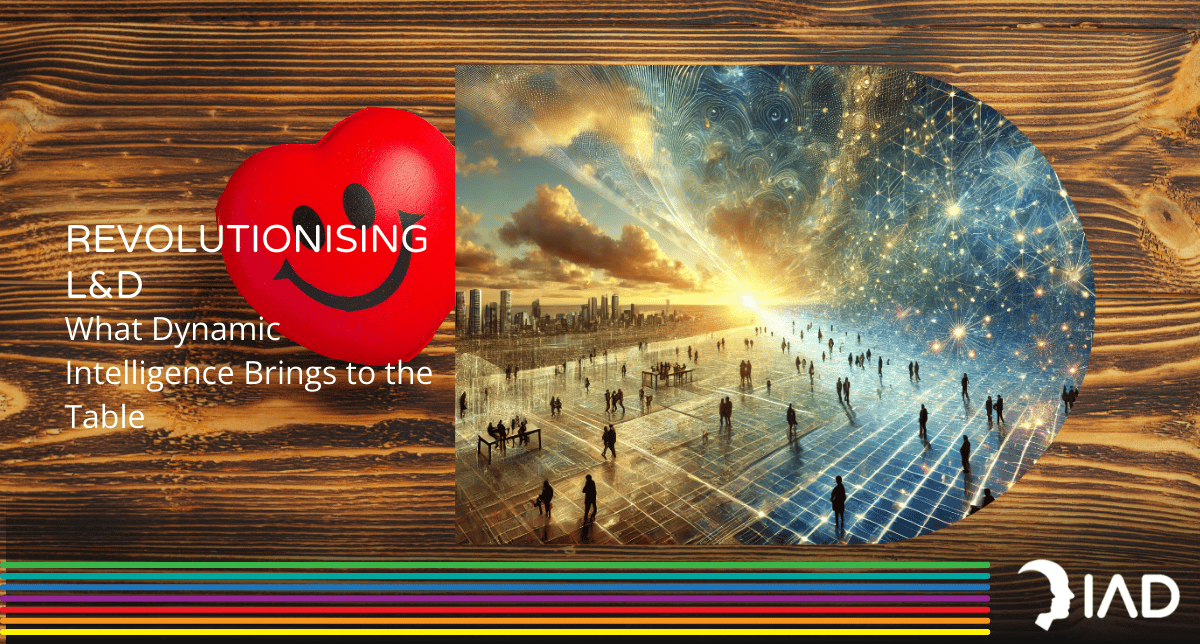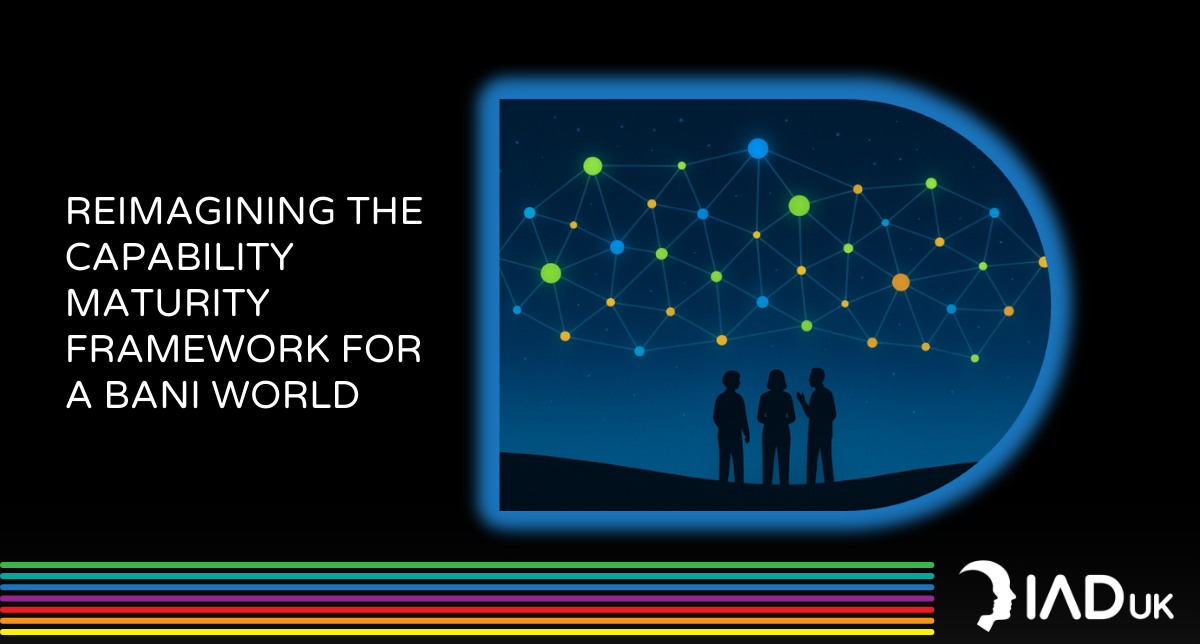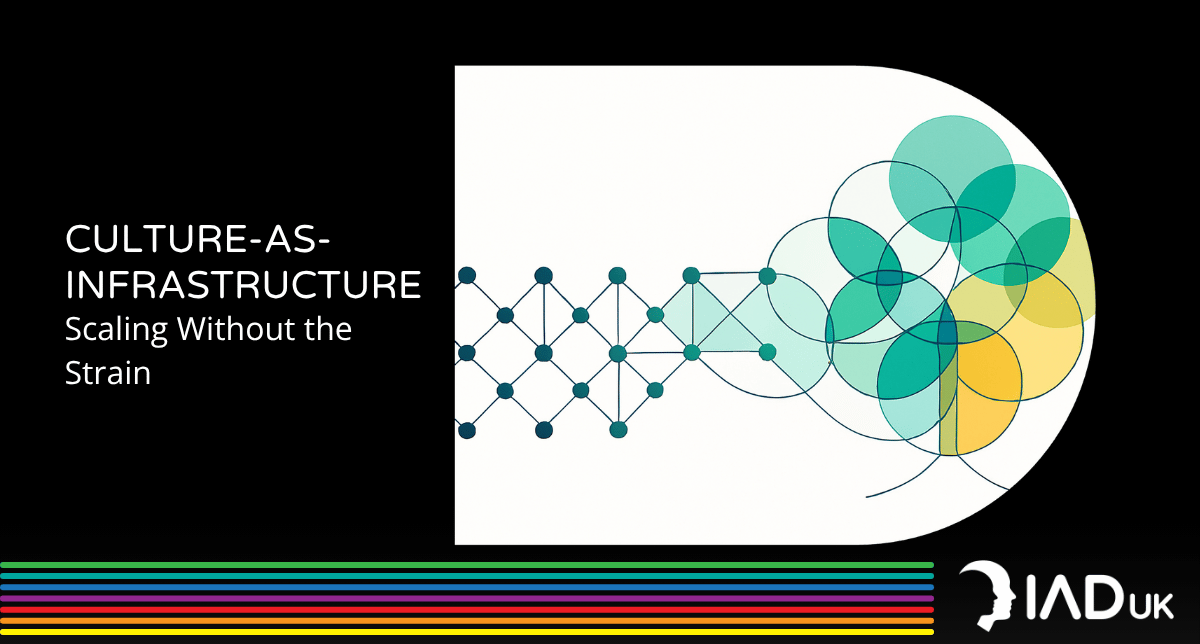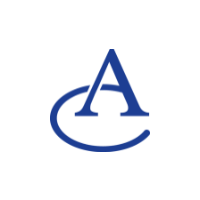Revolutionising L&D: What Dynamic Intelligence Brings to the Table
Why Shifting from Skill-Building to Cognitive Growth Unlocks Fulfilment and Performance

Happiness at work is often framed in terms of engagement, satisfaction, and fulfilment. But at its core, professional happiness is deeply connected to a single, often unspoken question: “Am I truly growing here?”
Traditional L&D programs have long equated growth with skill acquisition—building competency through structured training and development pathways. While this approach strengthens technical capability, it does not necessarily create a sense of evolution, mastery, or fulfilment. Employees may gain new skills, yet still feel as though they are navigating challenges the same way, making the same decisions, and thinking in the same patterns. The result? A workforce that is well-trained but intellectually stagnant, disengaged from meaningful professional growth.
The issue is not with the skills themselves. It is that most development efforts focus on what employees do, rather than how they think. True fulfilment—both in career progression and in daily work—comes when employees experience cognitive expansion: the ability to see patterns, shift perspectives, and navigate complexity with greater confidence and clarity.
To create L&D strategies that foster both performance and long-term professional satisfaction, organisations must move beyond surface-level skill-building and start developing cognitive complexity—the capacity to recognise, challenge, and refine the thought processes that shape decisions and actions.
Dynamic Intelligence provides the framework to make this shift.
Why Skills Alone Aren’t Enough
Traditional L&D programs are designed to answer a familiar question: “What skills do employees need to perform better?”
It’s a logical approach—but one that often overlooks the deeper issue.
In today’s complex work environments, employees are not simply executing tasks; they are navigating ambiguity, adapting to shifting priorities, and balancing competing demands. Skills alone do not prepare them for that reality.
An employee can be trained in conflict resolution techniques, but if they lack the Awareness to recognise their own cognitive biases, emotional triggers, or habitual responses, they will struggle to apply what they have learned under pressure. Similarly, a leader may understand strategic planning frameworks, but if their thinking remains reactive in uncertain situations, their ability to make sound decisions will be compromised.
The problem is not a lack of training—it is a lack of cognitive development.
Traditional L&D focuses on what to do, but without addressing how employees think, process information, and make decisions, skill development has a ceiling. Employees may gain knowledge, but they will not expand their capacity to engage with complexity, challenge assumptions, or evolve their leadership approach.
Growth, fulfilment, and long-term performance do not come from accumulating more skills. They come from developing the cognitive agility to apply those skills in new and uncertain contexts.
This is where traditional L&D reaches its limit—and where a shift toward cognitive growth is essential.
What Dynamic Intelligence Adds to the Equation
If traditional L&D equips employees with knowledge and tools, cognitive growth equips them with the ability to engage with complexity, adapt their thinking, and apply skills more effectively in dynamic environments.
This is where Dynamic Intelligence (DI) bridges the gap. It moves beyond technical skill acquisition and focuses on cognitive complexity—the ability to recognise patterns, challenge ingrained assumptions, and refine thinking in real time. When employees develop Dynamic Intelligence, they do not just become more capable—they become more adaptable, resilient, and engaged.
Here’s how it transforms development:
From Skill Acquisition to Cognitive Adaptability
Employees do not simply learn new frameworks or techniques—they learn to question their own cognitive habits, adjust their approach, and manage challenges they have not encountered before.
From Passive Content Absorption to Active Self-Awareness
Rather than passively consuming training content, employees develop Awareness of their own mental models—the ingrained patterns shaping how they interpret information, make decisions, and interact with others.
From Rigid Processes to Flexible Thinking
In fast-changing environments, the most skilled employees are not necessarily the most successful—the most cognitively flexible employees are. DI strengthens this adaptability, enabling leaders and teams to navigate uncertainty with confidence.
The result? Employees experience a deeper sense of growth and fulfilment. They no longer feel they are simply learning skills for the sake of development—they feel they are evolving in ways that make their work more meaningful, challenging, and rewarding.
Because when people experience growth at a cognitive level, work stops being about task completion and starts becoming a space for professional expansion and mastery.
Three Ways L&D Can Build Cognitive Complexity
Shifting L&D from skill acquisition to cognitive development does not require a complete overhaul—it requires reframing how learning is designed and delivered. Employees do not just need to learn new things—they need to expand how they think.
Here are three practical ways L&D leaders can begin integrating cognitive complexity into their learning strategies:
1. Design Development for Reflection, Not Just Retention
Most L&D programs measure success by knowledge retention and application. But deeper growth happens when employees are encouraged to reflect on how they think—not just what they know.
Why it matters:
- Reflection reveals blind spots and habitual thinking patterns that limit adaptability.
- It helps employees see why they make certain decisions, not just how.
Actionable Insight:
- Integrate structured reflection exercises into leadership and development programs. Instead of ending with “What did you learn?”, ask, “How did this challenge your usual way of thinking?”
- Use case studies and scenario planning that require employees to consider multiple perspectives and examine their assumptions before making decisions.
2. Shift from Problem-Solving to Pattern-Seeing
Most L&D programs focus on solving specific problems. But real strategic thinking emerges when employees can recognise patterns—across projects, relationships, and decision-making processes.
Why it matters:
- Pattern recognition enables anticipation, not just reaction. Employees can identify emerging challenges before they escalate.
- It deepens understanding of root causes, preventing recurring issues.
Actionable Insight:
- Introduce cognitive mapping workshops, where teams visualise how their default thinking patterns influence their approach to work.
- Encourage systems thinking, helping employees zoom out to see the bigger picture rather than getting stuck in isolated tasks.
3. Make Awareness a Core Competency
Skills change. Technology evolves. But one capability remains essential: cognitive Awareness—the ability to reflect, reframe, and adapt.
Why it matters:
- Employees who understand how they think can adjust faster to change and collaborate more effectively.
- It builds resilience in fast-paced, complex environments.
Actionable Insight:
- Incorporate Dynamic Intelligence assessments into leadership and talent programs to help employees identify their cognitive strengths and blind spots.
- Embed coaching and peer feedback loops into L&D, so employees are continuously challenging and refining their thinking.
When L&D shifts from teaching what people should know to helping them expand how they think, organisations build more adaptable, engaged, and fulfilled employees—people who do not just complete tasks but grow through them.
The Fulfilment Factor—Why Cognitive Growth Drives Happiness at Work
At its core, happiness at work is about progress. People want to feel they are growing, evolving, and becoming more capable over time—not just accumulating skills or completing tasks.
This is where cognitive growth becomes the missing link.
Many organisations focus on employee engagement through recognition programs, incentives, or skill-building initiatives. While these strategies have their place, they fail to address the deeper psychological drivers of fulfilment:
- The experience of mastery—feeling more confident in navigating complexity.
- The ability to adapt and lead through uncertainty—not just react to challenges.
- The sense that work is expanding thinking—not just refining execution.
When employees expand how they think—when they develop cognitive flexibility, challenge assumptions, and refine their decision-making process—they experience a deeper sense of professional satisfaction.
This directly impacts engagement, resilience, and retention:
- Employees feel more capable in uncertain situations.
- They develop greater resilience when facing setbacks.
- Work becomes more meaningful because it stretches them intellectually, not just functionally.
Cognitive growth is not just about improving performance—it is about enhancing the experience of work itself.
Because when employees feel they are evolving, they do not just stay engaged—they stay motivated, adaptable, and fulfilled.
Make Cognitive Growth the Heart of L&D
Traditional L&D programs build skills. But if organisations want to unlock hidden potential, increase engagement, and create more fulfilling work experiences, they need to go deeper.
Cognitive growth is the key.
When employees become more aware of how they think, they do not just perform better—they evolve. And that shift creates more adaptable, resilient, and fulfilled teams—teams that do not simply respond to challenges, but redefine them.
Now is the time to embed cognitive development into L&D strategy. Organisations that do so will gain a competitive edge in leadership, engagement, and workforce adaptability.
Schedule a call to explore how Dynamic Intelligence Development (DIDS)™ can help you design learning pathways that drive real transformation, not just skill acquisition.
Alternatively, why not download our comprehensive brochure




